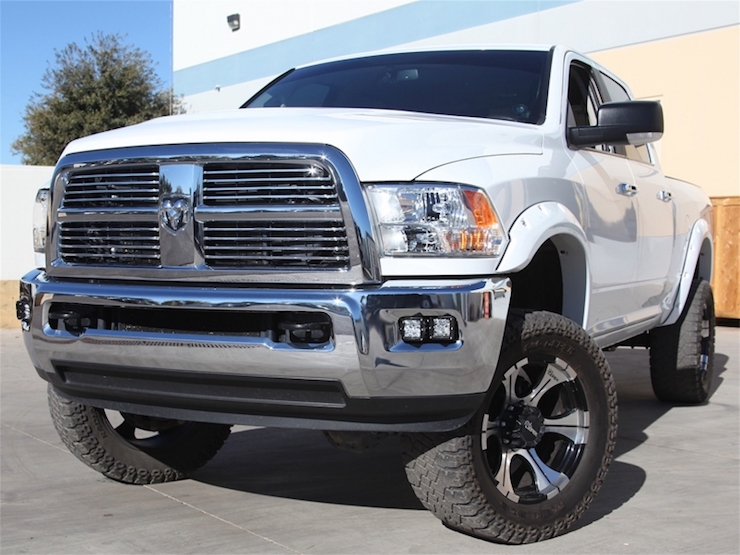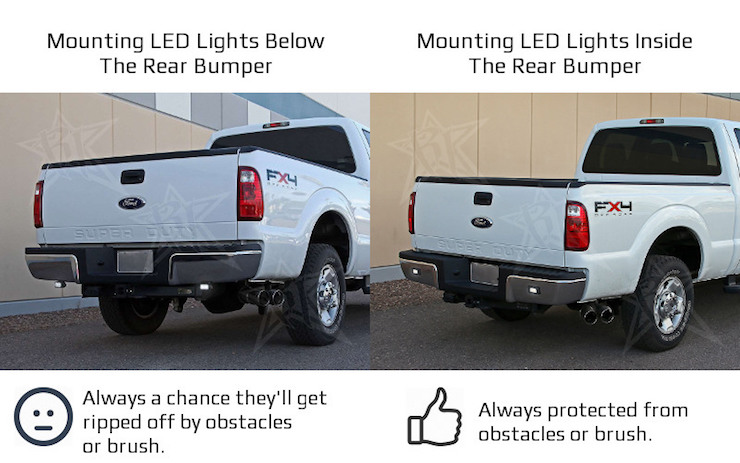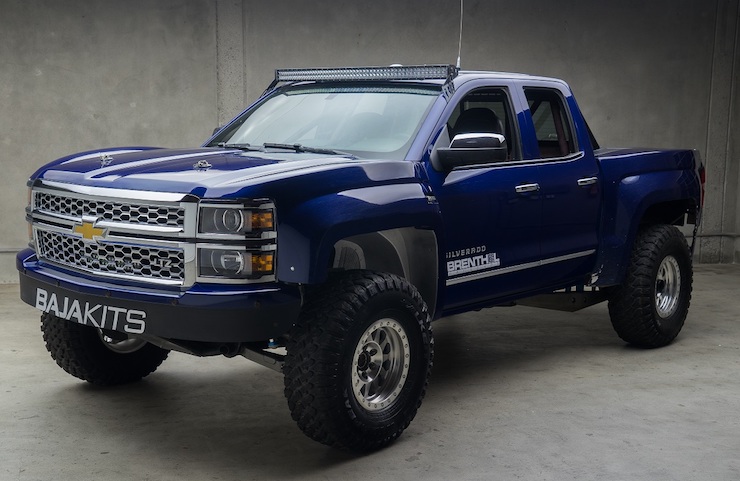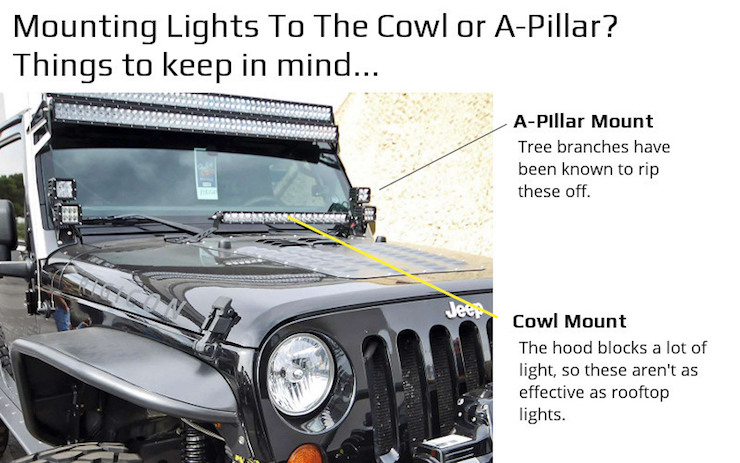While you can mount LED lights almost anywhere on your vehicle, some places work better than others. If you mount your lights on your A-pillar - and then they get ripped off by a tree on a basic off-road trail with some overgrowth - you're going to be kicking yourself.
Here are five common vehicle light mounting locations, each with some pros and cons.
An LED light bar mounted inside your front bumper offers a great view of the ground 10 yards in front of your truck (or so). This helps with last-minute adjustments on faster trails, as well as picking over obstacles on slower trails, and is always nice to have should you find yourself off-roading at dawn or dusk, or in areas without a lot of light.

Rigid Industries sells LED lights that are a direct fit replacement for many OEM fog lights, as shown on this Ram. See this page for more info.
While LED lights can be attached either inside a bumper or on top of it, mounting them inside the bumper makes them very resistant to damage. Unless you run into something that can damage your bumper, your lights are safe. Lights mounted on top of the bumper are at risk of being pulled off if you off-road in an area with lots of trees and brush.
NOTE: If you off-road in drier parts of the world, where trees and brush don't grow, there's still an advantage to mounting lights inside a bumper: It makes them harder to steal.
If there's a downside to mounting inside the bumper, it's that you'll either need to cut holes in your factory bumper, or you'll need an aftermarket bumper.
Off-road vehicles almost always benefit from some rear lighting. If you end up driving at night, you're probably going to have to pick your way thru some obstacles. When that happens, you can expect to have to backup from time to time...and it's really nice to see what's behind you.
Most vehicles are going to need lights mounted inside the bumper, as mounting them above the bumper (another good location) is going to interfere with the operation of a tailgate. There are quite a few DIY guides to cutting holes into factory rear bumpers, and then mounting lighting. There are also aftermarket rear bumpers with built-in cutouts.

Images courtesy RigidIndustries.com
The one thing that's for sure, however: do not mount rear-facing LEDs underneath your vehicle. Anything underneath your vehicle is at risk of being ripped off on the trail.

This is probably the most popular place to mount big LED light bars, and that’s for a good reason. An LED light bar pumps out quite a bit of light, and when mounted up high it can really light up the road ahead. While it doesn't do much to help you see what's 10 or 20 feet in front of your truck, it's great for seeing 500 feet (or farther).
Rooftop bars are also fairly protected from tree limbs, brush, etc. as your vehicle naturally tapers off near the roof. Still, a good sturdy mount is important, because one tree branch is really all it takes to ruin a good time.
Most grille guards, bull bars, brush guards, etc. have mounting points for lighting. Depending on the accessory, these can be really smart mounting points, or not-so-smart mounting points.
When mounting a light to a bar or guard, it's important to think about:
Whatever you decide, keep in mind that it's really not that much more expensive to buy a replacement bumper than it is to buy a quality grille guard.
Hood or cowling mounted lights can be fine for some vehicles, but they're not ideal for most. The problems are:

If you off-road in a place like Moab without trees or brush, you can disregard the a-pillar concern. But the cowl-mounted lights really only make sense if you can't mount to the roof, or you're trying to pump out as much light as possible (like this Jeep is). Image courtesy RigidIndustries.com.
If you're going to mount your lighting onto an existing surface (the top of a bumper, the cowling behind the hood, etc.) you have many different mounts to choose from. Here are a few to consider:
Last but not least, let's talk about the high cost of cheap lights. It's easier than ever to find an LED light bar for an eye-popping deal, but keep in mind that:
If you spend $50 on a cheap light bar - but have to replace it every season - you're going to spend a lot more than you would on one good light bar that lasts a lifetime. We only sell Rigid Industries lighting, and for a very good reason: We've taken if off-road racing without incident. That means it doesn't have trouble with weather or heat.
As they say, buy nice or buy twice (or, in the case of LED lighting, buy new lights every year).
You must login to post comments.